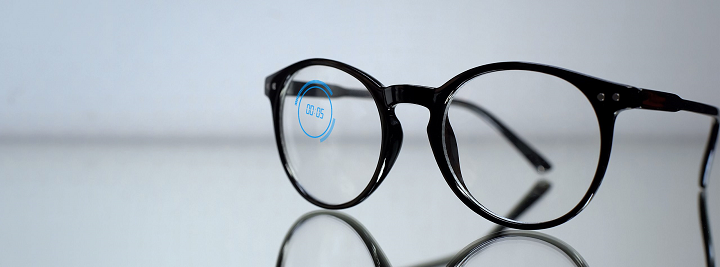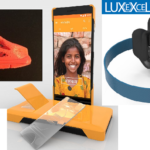

Dutch company Luxexcel, said to be the world’s only technology provider for 3D printed commercial lenses, wants to speed up adoption of consumer smart eyewear. To do so, the company aims to meet the eyewear needs of over 75% of the world’s adult population needing prescription lenses by using its patented 3D printing manufacturing VisionPlatform.
This month, the company announced the next generation, VisionPlatform 7, which enables businesses to print prescription lenses for smartglasses in their own facilities. The technology-agnostic platform integrates a full suite of solutions for 3D printing prescription smart eyewear, and was created based on customer needs for high-performing, flexible manufacturing systems, as well as market demand.
“The launch of VisionPlatform 7 begins a new era in the manufacturing of prescription smart lenses,” said Luxexcel’s CEO Fabio Esposito. “To compete in the race to launch consumer-ready smartglasses, eyewear manufacturers need to address prescription in their smartglasses devices. More than 75% of the adult world population today requires prescription lenses. Luxexcel provides a disruptive solution where smart technology is seamlessly combined with a prescription lens, rather than adding prescription power to the smart device as an afterthought. Luxexcel is accelerating the market introduction of true consumer smart glasses by allowing technology companies to manufacture prescription smart eyewear in the comfort of their own manufacturing home.”
The new VisionPlatform 7 includes several new features that are centered around 3D printing prescription lenses for smartglasses that are thin, lightweight, and can also be used in commercial frames. These features include:

- Strong adhesion properties, meaning different adhesion promotors for objects like holographic optical elements and waveguides. These promotors make sure that integrated objects have a strong bond with the prescription material.
- New materials, including options for high temperatures so different anti-reflective and hydrophobic (water-repelling) coatings can be applied to lenses in ophthalmic post-processing steps.
- Custom lens design, so users can fix common refractive issues, like prisms, multifocal progressive designs, free form lenses, and single vision lenses.
- Printable hardcoating, which has been integrated as part of the 3D printing process. Smart technologies inside the lens, including specifically selected areas, are protected, as Luxexcel can achieve an even surface coating at low temperatures.
VisionPlatform 7 integrates many different objects during 3D printing, like liquid crystal foils and waveguides, in order to create its prescription smart lenses. The platform includes everything users need to print lenses for smartglasses on-demand, including proprietary materials, advanced software, processes, and hardware, and it also features optimized printing processes, which make it possible to fabricate features that are difficult, or even impossible, to create with more traditional forms of lens making, like micro lenses and the necessary air gaps for waveguides.
“To manufacture a device that combines prescription and smart functions requires a combination of skills in technology and optics. It can be difficult to find this combination of skill sets in one team, so we offer this experience to our partners,” said Guido Groet, Chief Strategy Officer at Luxexcel. “We provide our customers with a complete solution to manufacture prescription smart lenses so that they can focus on developing the technologies and content for the device. With VisionPlatform 7, more innovative features can be added to smartglasses and the only limitation is the imagination of the designer.”
With the ability to print prescription lenses for smartglasses, thanks to the new VisionPlatform 7, designers will enjoy flexibility to create the eyewear products they want, and companies will be able to speed up any Augmented Reality (AR) eyewear projects. Speaking of AR eyewear, this new product launch comes on the back of Luxexcel’s successful product demo earlier in the year, which showed how you can combine a waveguide, prescription lens, and a projector in a chic device—three important elements to AR smartglasses—to create a 3D printed prescription lens.
In its “Markets for 3D Printing Eyewear 2021“ report, SmarTech Analysis projected that yearly revenue opportunities in the 3D printed eyewear industry would likely amount to $2.26 billion by 2030, with overall revenues predicted to be more than $5 billion a year.
(Source/Images: Luxexcel)
If you're looking to get architectural 3D animation in the USA, our service provides an exceptional way to bring your architectural concepts to life through dynamic, immersive visuals. Through our platform, you can easily request high-quality 3D animations that showcase your designs in motion, offering a detailed view of your project from multiple angles and perspectives. Whether it's for a real estate development, a commercial building, or an urban planning project, our expert team ensures that every detail is captured in a visually compelling animation.
Through our website, you can seamlessly get architectural 3D animation tailored to your project’s specific needs. With our help, you can offer potential clients or investors an engaging experience that goes beyond static images. By integrating CGI animations with real-world settings, lighting, and textures, our team creates a lifelike experience that allows your audience to interact with your project as though it were already built. This service is perfect for presenting complex designs in a clear, visually attractive way that stands out in the competitive architectural market.




